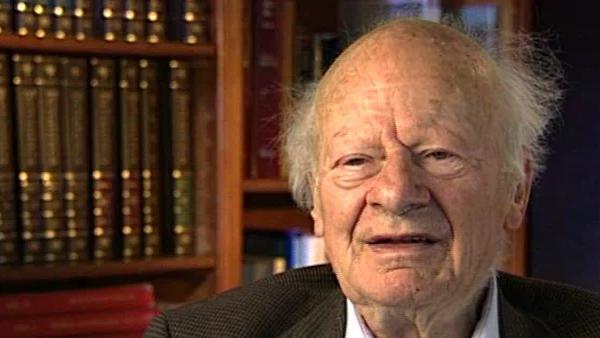NEXT STORY

Being recommended Emil Konopinski
RELATED STORIES

NEXT STORY

Being recommended Emil Konopinski
RELATED STORIES


|
Views | Duration | |
|---|---|---|---|
| 61. A paper on the orbits in a cyclotron | 392 | 04:18 | |
| 62. The synchrocyclotron and the betatron | 376 | 02:20 | |
| 63. The discovery of positrons | 496 | 03:49 | |
| 64. My interest in the limits of quantum electrodynamics | 571 | 01:32 | |
| 65. A paper with Arthur Compton on cosmic radiation | 411 | 02:03 | |
| 66. The Bethe-Heitler Formula | 566 | 00:29 | |
| 67. Yukawa's meson prediction | 463 | 03:01 | |
| 68. Being recommended Emil Konopinski | 404 | 02:21 | |
| 69. My postdoc students at Cornell | 560 | 01:53 | |
| 70. How the Sun is radiating? | 1 | 535 | 04:16 |


Yukawa predicted a meson as the particle which holds the nucleus together. There is obviously a strong force in the nucleus, as there is a strong electric force, and an easy way to visualize the electric force is to say that a photon is emitted by one charged particle and absorbed by another, and so Yukawa said some other particle must be emitted to make the much stronger nuclear force. 'And I know', said Yukawa, 'that the nuclear force is short range, and I can easily do that by giving mass to that particle'. So he postulated a particle of intermediate mass which nowadays is called a meson, to transmit the nuclear force. The trouble was, and that trouble only became gradually evident, that the meson you saw in cosmic ray didn't have the properties that Yukawa had predicted - but I think that's anticipating. But I was terribly interested.
[Q] Then you actually work on trying to unravel or decipher all the meaning of a...
I worked on cosmic ray showers and I worked on neutrons and cosmic rays with Placzek.
[Q] And you worked on Yukawa Theory.
And I worked on Yukawa theory trying to apply it to the deuteron, and it worked very nicely for the deuteron and it was able to predict that the forces between neutron and proton are not purely central forces, and you needed that in order to explain that the deuteron has an electric quadrupole moment. That quadrupole moment had been observed at Columbia by Rabi's collaborators, and so the Yukawa theory gave possibility of explaining why there should be non-central forces between nucleons which would explain the quadrupole in the deuteron.
The late German-American physicist Hans Bethe once described himself as the H-bomb's midwife. He left Nazi Germany in 1933, after which he helped develop the first atomic bomb, won the Nobel Prize in Physics in 1967 for his contribution to the theory of nuclear reactions, advocated tighter controls over nuclear weapons and campaigned vigorously for the peaceful use of nuclear energy.
Title: Yukawa's meson prediction
Listeners: Sam Schweber
Silvan Sam Schweber is the Koret Professor of the History of Ideas and Professor of Physics at Brandeis University, and a Faculty Associate in the Department of the History of Science at Harvard University. He is the author of a history of the development of quantum electro mechanics, "QED and the men who made it", and has recently completed a biography of Hans Bethe and the history of nuclear weapons development, "In the Shadow of the Bomb: Oppenheimer, Bethe, and the Moral Responsibility of the Scientist" (Princeton University Press, 2000).
Tags: Columbia University, Hideki Yukawa, George Placzek, II Rabi
Duration: 3 minutes, 2 seconds
Date story recorded: December 1996
Date story went live: 24 January 2008